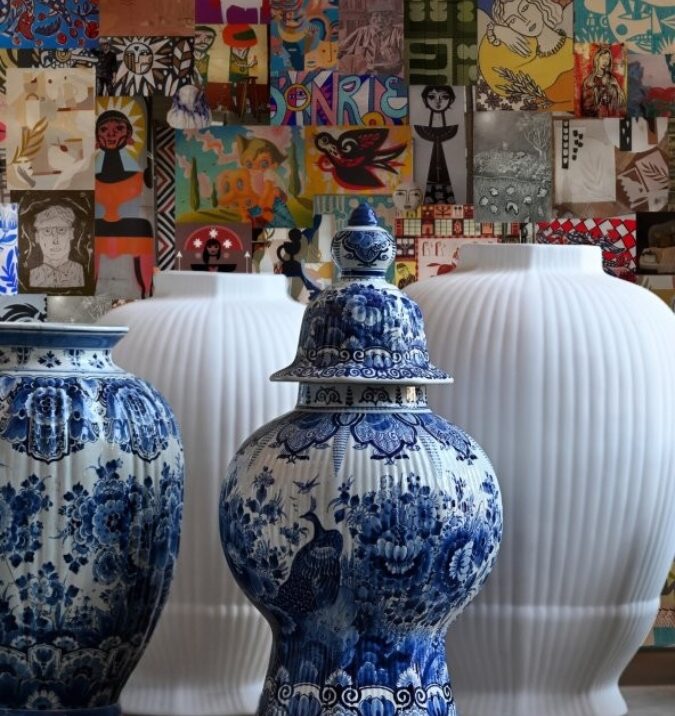

At the Royal Delft Museum, two worlds come together: the centuries-old craft of Delft Blue and the expressive energy of international street art.
With the exhibition Urban Blue – from Bricks to Tiles, we bridge tradition and innovation. Six international street artists draw inspiration from Delft’s ceramic craftsmanship, translating this rich heritage into a contemporary, urban visual language.
The result is a vibrant fusion of ceramics and street art, where new perspectives emerge and craftsmanship in all its forms is celebrated.
In collaboration with STRAAT, the museum for street art and graffiti in Amsterdam, six international artists have been invited: Claudio Limon (Mexico), Keya Tama (South-Africa) Madi (France), Ryol (Indonesia), Speto (Brazil) en Tja Ling Hu (The Netherlands).
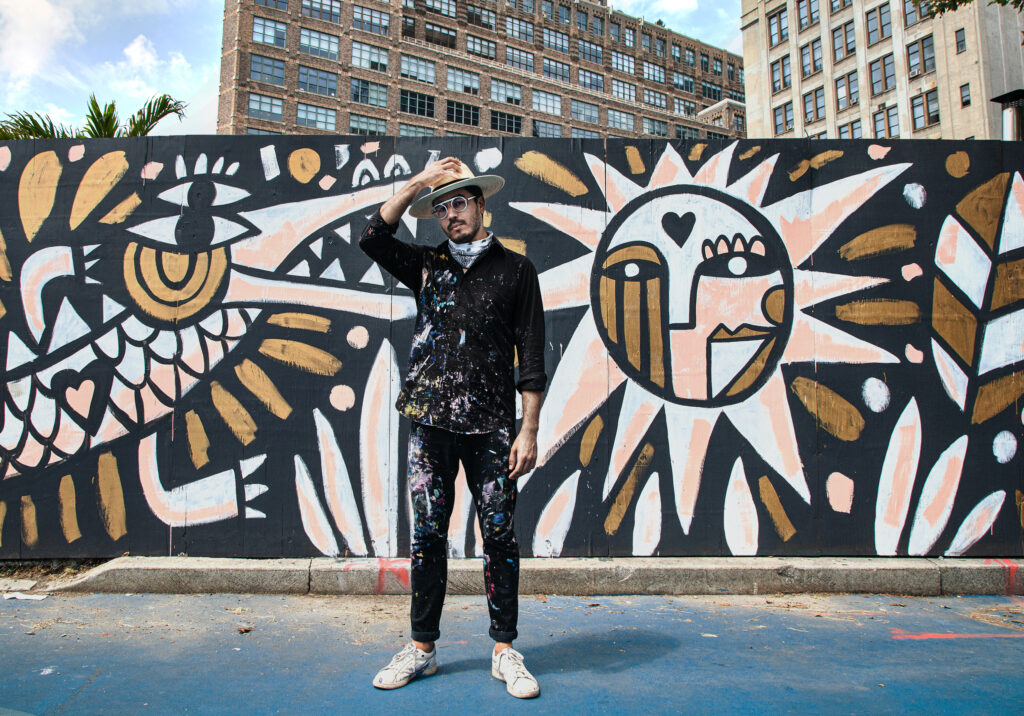
Claudio Limon (b. 1979) was born in the highlands of the Jalisco region in Mexico. He currently lives in Guadalajara and works as a contemporary artist. Through his vibrant works, Claudio captures the essence of Mexican culture. Influenced by his heritage, he explores artistic themes related to identity, culture and emotion. His style is the result of a fusion of traditional Mexican elements with pop culture, surrealism, color and other contemporary influences. Claudio creates dynamic compositions that masterfully combine hypnotic patterns.
Claudio has exhibited his work in Tokyo and Buenos Aires and has completed murals in Los Angeles, Miami and Mexico City. Recently, he completed one of Mexico’s largest tile murals (1,765 m²), further establishing his reputation as a leading muralist and contemporary artist.
Instagram: @claudiolimon

Keya Tama (b. 1997) is a South African artist based in New York City. Inspired by pastel color palettes, patterns and symbolism, he has been active as an artist and muralist since the age of thirteen. His style can be described as ancient-contemporary minimalism: by distilling and refining imagery into minimalist forms while preserving their essence. His works seek to reunite the old and the new. He achieves this through contrasting yet harmonious iconography. Drawing from the rich visual language of art history, Keya Tama combines recurring themes to uncover sharp contrasts and unexpected connections. The result is a body of work that feels unusual and striking, yet oddly familiar.
Working primarily with acrylic paint, his paintings convey a strong graphic sensibility. Across his oeuvre, recurring themes emerge including the tension between the ancient and the contemporary, family and community, monomyths and minimalism.
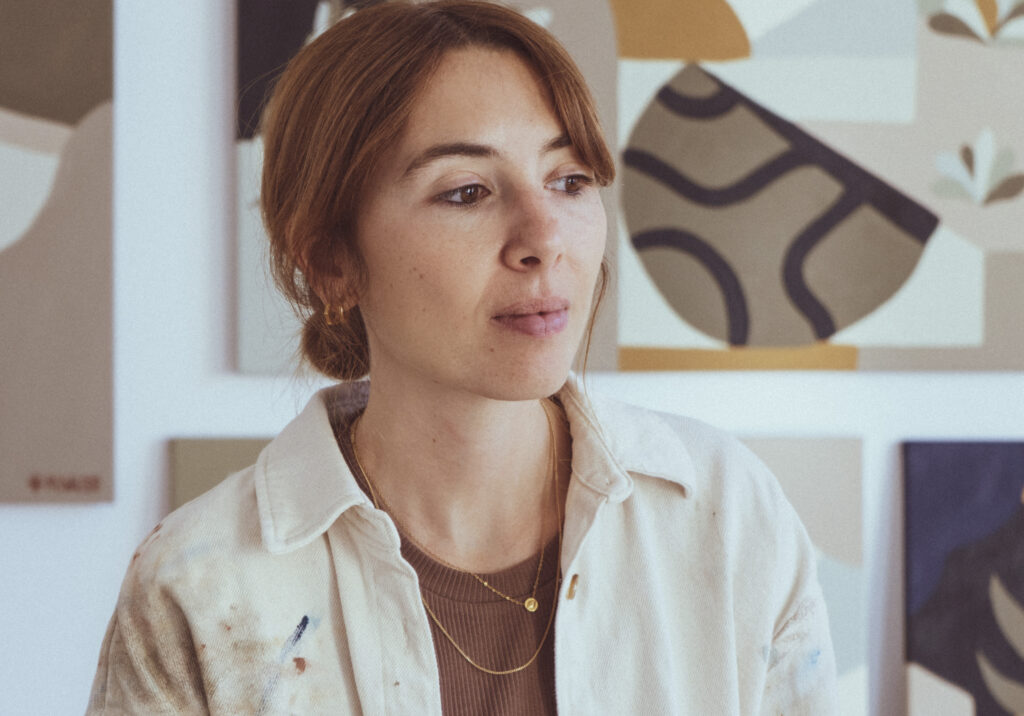
Madi (b.1987) is currently living in Lisbon, Portugal. She develops her own style through graphic research, combining painting and mural techniques.
As an artist, she tries to evolve constantly. Before, her work was predominantly black and white, full of meticulous details. Now, she immerses herself in a colorful process of production, less controlled, spontaneous and more instinctive. This means her creative process is strongly influenced by the concept of spontaneity. Her production of drawings is obsessive, a reflection of the journey through her mind. This results in the depiction of imaginary characters, textures, sensations, dreams, and fantasies.
It is an intimate and endearing process. She paints because she needs to. The viewer enjoys the creation of a private universe, free from any boundaries. As if she is searching for absolute peace, a goal which can only be fulfilled by the act of painting.
Website: Madi’s original artworks
Instagram: @________madi______
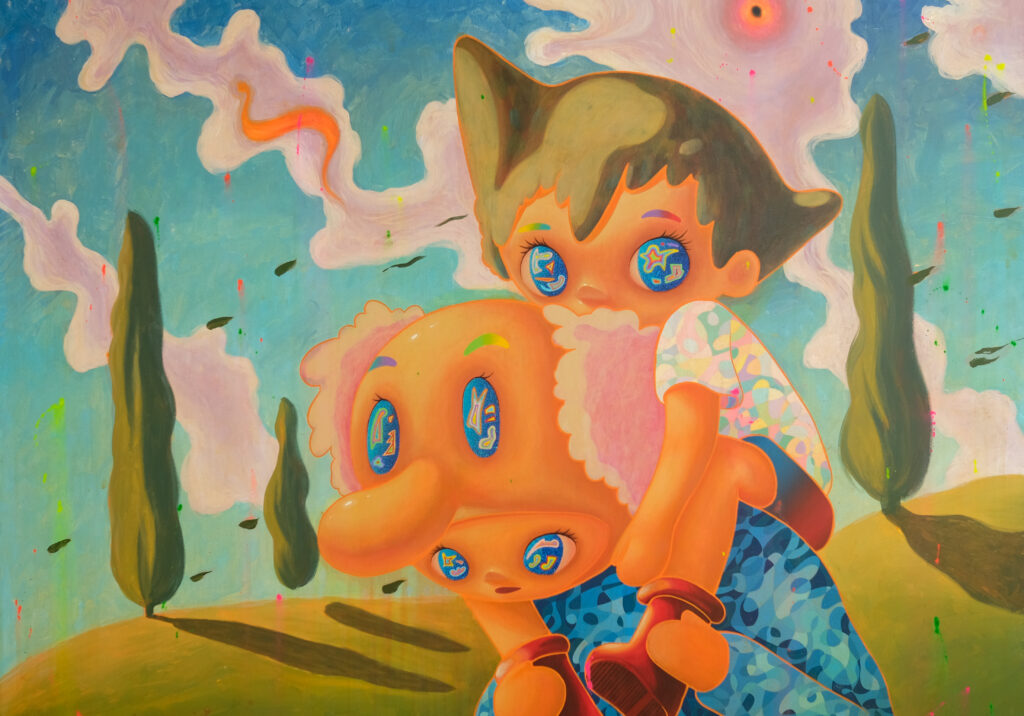
Yogyakarta-based artist Laksamana Ryo (b. 1993), better known as Ryol, immerses himself in the world of the visual arts, with a distinct focus on pop culture. Originally a wannabe-musician, Ryol turned his passion for music into becoming a pop culture-inspired visual artist with his childhood as main source of influence. He primarily appoints his parents and the many Sunday afternoons filled with watching TV cartoons as the ‘early stage’, which taught him to handle freedom and take responsibility.
His transformation into a pop culture artist made his main vision and biggest dream clear. Painting is his vocation, a life’s work that he does not want to end. However, his ambition reaches further: striving to be an artist that leaves a permanent mark on his generation and leaves a piece of history.
Website: Ryo Laksamana | Explore Inspiring Art and Creativity
Instagram: @ryol.id
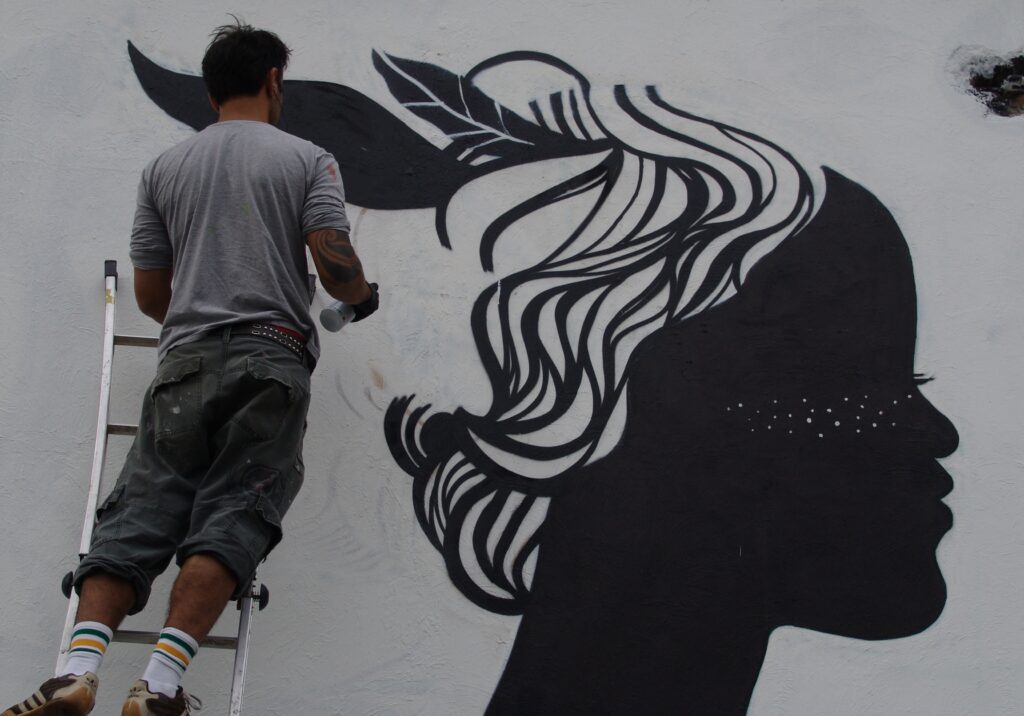
Speto (b. 1971) is a true pioneer of the São Paulo graffiti scene. Born in one of the city’s outskirts, he was exposed to local street culture and graffiti from an early age. This inspired him to start painting in public spaces in the mid-1980s.
Over the years, Speto has developed a unique and unmistakable style, strongly influenced by Brazilian artistic traditions such as handcrafted woodcuts and Cordel literature: a folk tradition of poetic stories illustrated with simple woodcut prints.
His visual language is characterized by powerful, often black-and-white figures that convey both simplicity and expression. Through this style, he connects historical and contemporary elements, creating a bridge between popular culture and contemporary urban art.
His body of work includes both murals in public spaces and pieces in galleries and museums. Speto is not only a key figure in the world of contemporary Brazilian art but also in the global street art scene.
Instagram: @speto
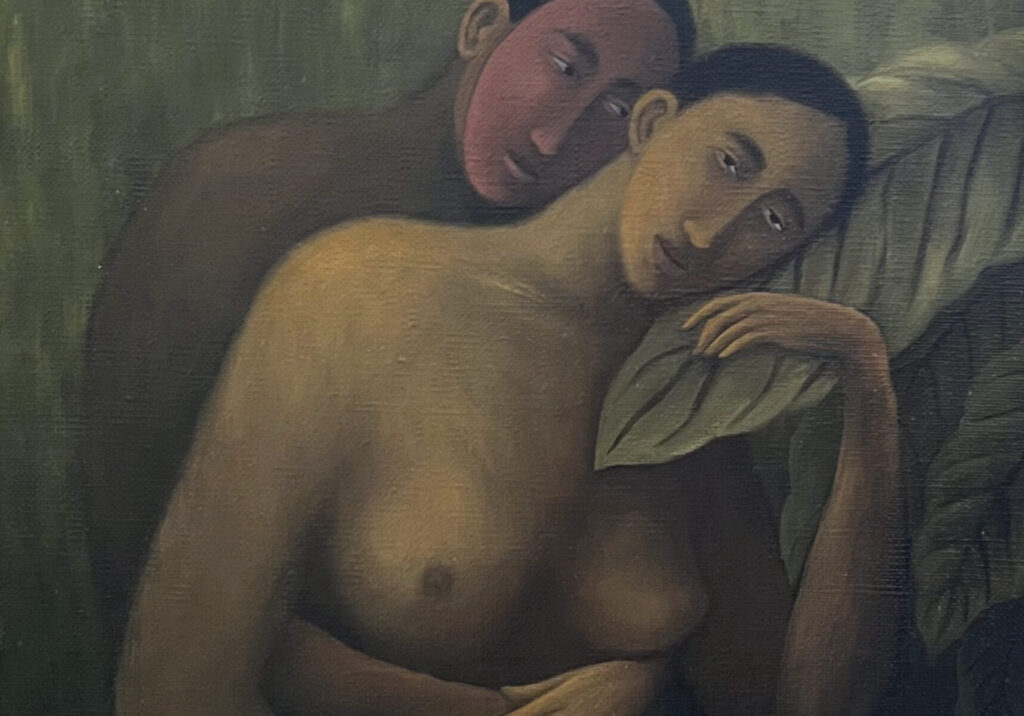
Tja Ling Hu (b. 1987) is a visual artist and illustrator. In 2017 she won the prestigious Fiep Westendorp Stimuleringsprijs with a project depicting her family’s journey from China to the Netherlands between the 1930s and 1970s. Whereas for her family it was a quest in the hope of a better life, for Tja Ling her Chinese heritage was a quest for her own identity.
Tja Ling takes you along into her world of thoughts that manifests itself in a surrealistic, dreamlike and sometimes gloomy way. With her distinctive, fine lines and soft pencil strokes she invites you to literally enter her world: it is only when you get closer that you get in contact with the details. Then, the work becomes intimate and personal. It shows the connections between her Chinese heritage and upbringing, which she tries to understand better through the creation of her artworks.
Tja Ling’s work has been shown in various galleries, museums and art fairs, such as Art on Paper (Amsterdam) and museum Lam (Lisse). In addition to her work on paper she also makes murals at home and abroad.
Website: TJA LING 嘉玲
Instagram: @tja_ling
The creative process began on November 3rd, when six international street artists started working live in a specially designed temporary studio inside the museum. Until 14 November, visitors to the Royal Delft Museum were able to watch the magic unfold during the first residency, from the very first sketch to the final brushstroke.
During their residency, the artists drew inspiration from the centuries-old craft of Delft Blue, which they translated in their own unique ways into contemporary, expressive artworks. This fusion of tradition and modern street art promises a unique cross-pollination where past and present meet in colour, form, and creativity. In February, the artists will return for a second residency, during which they will create a mural on the exterior wall of the factory. With a bit of luck, you may even see the artists at work during this period.
Curious about the result? The completed works will later become part of the new exhibition at Royal Delft. Visit between 23 February and 7 March and witness the creation of modern art inspired by an age-old tradition.
The subtitle From Bricks to Tiles refers to the creative translation the artists make: from their familiar surfaces to the world-famous ceramics of Royal Delft. During their residency, each artist will create an impressive tile tableau. For centuries, tiles have played an important role in Delft Blue pottery, forming one of the oldest and most recognizable applications of Delft Blue. Originally developed as practical wall coverings, they quickly evolved into decorative and expressive elements of Dutch interiors. In addition, each artist selects an object from the Royal Delft collection to incorporate into their creative process.
Royal Delft Museum X STRAAT Museum Amsterdam
We are excited to present this special project in collaboration with STRAAT Museum Amsterdam. STRAAT Museum Amsterdam introduces visitors to the dynamic world of street art and urban art and is located at the iconic NDSM wharf. The museum brings together artworks by (inter)national artists and shows how street culture and art influence each other. It is a place where creativity, innovation, and social themes come together, offering visitors a fresh perspective on art.
STRAAT and the Royal Delft Museum are joining forces to combine their expertise and create a unique experience. This collaboration strengthens the project and brings us closer to presenting a truly beautiful and meaningful exhibition. The teams from the Royal Delft Museum and STRAAT are ready to make this a memorable experience.
After the Artists-in-Residence program in November, the artists will return to Delft in the spring of 2026. In addition to the six tile tableaux and objects from the Royal Delft collection, each marked with their individual style, the artists will create a mural on the factory’s exterior wall between February 23 and March 7, 2026. This mural will bring tradition and contemporary street art together in one impressive composition.
The results of this groundbreaking project will be on display starting March 7, 2026, in the exhibition Urban Blue – From Bricks to Tiles at the Royal Delft Museum.
This project is a collaboration with the STRAAT Museum.
This project is made possible with the support of:
VSB Fonds, Gifted Art, Stichting Van Achterbergh-Domhof, Gilles Hondius Foundation, and WestCord Hotel Delft.
